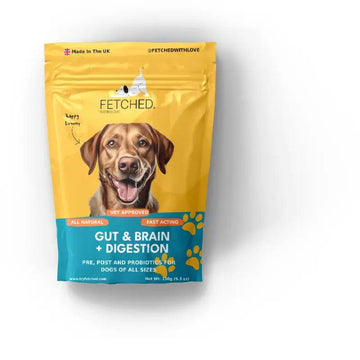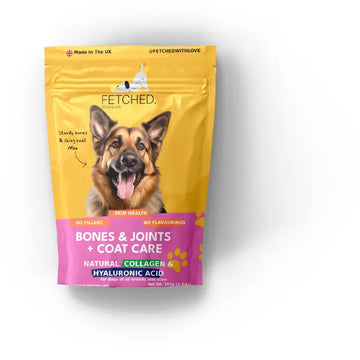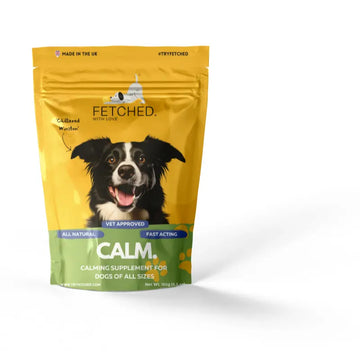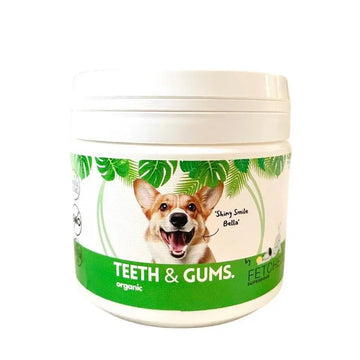Why is my dog's poop yellow? Well, yellow dog poop can mean various things and it's most common in very high fibre diets. This is not necessarily a bad thing, but at the same time you must also be aware of the more serious causes where yellow dog poop may be a sign of an underlying medical condition.
As vets, we always encourage you, the dog owner to keep an eye on your pet's bowel movements. It's not the most glamorous part of pet ownership, but it's a crucial aspect of understanding our furry friends' health. When changes occur, such as finding your dog's poop is a different colour, it can be alarming and confusing.
Table of Contents
If you have started searching on the internet for yellow dog poop or mustard yellow dog poop, you may have found various alarming articles and how it can be associated with conditions like pancreatitis.
However, before jumping to conclusions let's explore the various potential causes, other alarm symptoms and when a change in poop colour might actually warrant a trip to the vet.
Understanding yellow dog poop and other colours
Dog poop is certainly not the most pleasant topic to discuss, but just as in humans, it can be one of the first signs that something may not be right. The colour, consistency, and frequency of your dog's poop can provide vital clues about their digestive health, diet, and overall well-being.
Normally, a healthy dog's poop should be a chocolate-brown colour. This is due to the presence of bilirubin, a byproduct of the breakdown of red blood cells, which is processed by the liver and excreted in the stool. The firmness of the poop should be similar to play-dough, and it should be easy for your dog to pass. This consistency and colour means they are not constipated and their diet is adequate.
You may have heard of the Bristol stool chart before; this is essentially a stool chart used in humans to grade the consistency. You can also use it to a similar extent in dogs for descriptive and medical purposes.
Luckily, variations in colour are not uncommon and can range from different shades of brown to green, yellow, or even orange poop.
Changes in the colour of your dog's poop could be due to a variety of factors such as their diet, the presence of an underlying disease, or changes in the digestion process.

Green dog poop
For instance, green poop might indicate that your dog has been eating a lot of grass, while very light-coloured or white poop can suggest a diet high in bone content or problems with the liver or gallbladder.
Yellow dog poop
Yellow or mustard coloured poop, could signify a rapid passing of the stool through the digestive tract or issues with the liver, pancreas, or gallbladder.
We'll focus more on yellow poop below.
Orange dog poop
Orange poop, on the other hand, could be due to food passing too quickly through the intestine or the presence of blood in the upper gastrointestinal tract.
It can also be common for example if your dog has recently eaten something orange like carrots or pumpkin! These are very high in carotenoids, and can add a tinge of orange to your dog's poop.

It's important to remember that occasional variations in the colour of your dog's poop could be normal and not a cause for concern. It can become concerning however if you have excluded all the temporary causes such as diet, and the colour persists, or if there are other associated symptoms such as weight loss, vomiting, decreased appetite, or changes in behaviour.
Yellow Dog Poop Causes
I have so far mentioned dietary changes (foods high in fibre content) and pancreatitis as two potential causes for yellow dog poop. But there can be many more. Here are the six main causes I can think of:
1. Dietary Changes or Indiscretions
If you've recently changed your dog's diet, or if your dog has had a feast on something they shouldn't have (like raiding the trash), this can result in a yellow poop colour.
Furthermore, if you notice yellow bits in dog poop rather than a more uniform colour, it is more likely to be diet related. For example, undigested corn seeds can have that appearance. Alternatively, the yellow bits could also signify tapeworm eggs (see below under infections)
The digestive system might be trying to process food substances it isn't accustomed to, leading to faster transit and less time for the bilirubin to be processed.
As the bilirubin has less time to combine with the stool and be conjugated, it can result in a pale yellow or even a pale white poop colour (this is the same as in humans by the way!)

2. Food Intolerances or Allergies
You may be aware that your dog is sensitive or intolerant to particular foods. For some, the first sign is from a change on poop colour. Particular ingredients in the food, can lead to an upset stomach and cause changes in stool colour.
Common culprits include certain proteins, dairy products, grains, or artificial additives. A lack of the right gut bacteria can also lead to food intolerances or stomach problems.
To combat this we would strongly recommend you try some probiotics for dogs to see if it makes a difference.
3. Stress
Just like humans, dogs can suffer from stress-induced digestive issues. If you know your dog suffers from separation anxiety or is disturbed by loud noises, this can have long term consequences in their behaviour and health, just as you would expect in humans.
Stress in dogs can manifest through yellow dog poop, probably as a secondary effect due to a decreased transmit time through the gut.
Various dog calming tablets or other remedies may help in this instance.
4. Gastrointestinal Infections or Inflammatory Bowel Disease (IBD)
Infections caused by viruses, bacteria, or parasites can lead to chronic inflammation such as inflammatory bowel disease (IBD) or colitis.
Yellow bits in dog poop can actually signify tapeworm eggs and there may be a high number of these. Sometimes these are white as well, and you may even be able to see the tapeworms themselves as very thin and short strings.
In colitis, the constant inflammation can speed up the transit time of the stool, resulting in the yellow colour are seeing.
Other than infections, IBD can also be caused by immune dysfunctions or food intolerances such as to wheat or gluten in general.
It is therefore a good idea to trial a period of a wheat free diet if you are concerned that your dog may be intolerant to certain foods.
Gluten, which makes up about 80% of the protein found in bread wheat is one of the main causes of food intolerance and the incidence is going up.

5. Liver or Gallbladder Issues
These organs play a crucial role in the digestion process due to their metabolic and secretory functions.
The liver for example secretes bilirubin and if this process does not work properly, it can lead to pale or yellowish poop. Bilirubin is by nature a brown liquid and the main pigment in healthy looking brown stool.
6. Pancreatitis
This is an inflammation of the pancreas, which can interfere with digestion. One of the symptoms of pancreatitis can be yellow or greasy looking poop.
The latter may be harder to spot without careful examination, which let's be honest, few of us would be happy to do. However, if your vet asks you if you have noticed mucus yellow dog poop, that is what they are referring to.
Signs of pancreatitis in dogs are:
- Vomiting,
- Lack of appetite (not eating his or her food properly)
- Weight loss
- Lack of energy
- Tummy pain

Treatment for pancreatitis in dogs
Pancreatitis can be either mild or more severe and the treatment will depend on your vet's consultation. It may simply require some analgesia and will pass with time, or may need an admission for a drip (for hydration), strong analgesia, nursing care and careful feeding.
Remember that your dog's stool is a key indicator of their overall health, so don't dismiss consistent changes. Always get in touch with your local vet if you have any concerns or notice consistent changes or multiple symptoms appearing at the same time. Yellow dog poop can often be an early sign of something going wrong can if it persists or you can't find an obvious cause, you should get an expert opinion.









